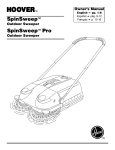Download CY-7049
Transcript
t. uc od ur pr Total p53 ELISA Kit User’s Manual For Research Use Only, Not for use in diagnostic procedures ca at th al an u rm se fe rt o th eu Intended Use................................................ 1 Storage......................................................... 1 Introduction.................................................. 2 Principle of the Assay.................................. 2-3 Materials Provided....................................... 4 Materials Required but not Provided........... 4 Precautions and Recommendations............. 5 Detailed Protocol......................................... 6-9 Calculations.................................…............ 9 Measurement Range.................................... 9 Troubleshooting........................................... 10 Reagent Stability......................................... 10 Assay Characteristics.................................. 10 Example of Test Results............................. 11 References................................................... 12 Related Products......................................... 12 m Cat# CY-7049 ew CycLex Total p53 ELISA Kit ith yo ELISA Kit for Measuring Total Human p53 re Intended Use Pl ea se The CycLex Research Product CycLex Total p53 ELISA Kit is designed to detect and quantify the level of total human p53 in cell lysate. Since the amino acid sequence p53 is not conserved in mouse and rat p53, this ELISA kit can not be used for mouse and rat cells. This assay is intended for the detection of total human p53 in cell lysate. nl y! This assay kit is for research use only and not for use in diagnostic or therapeutic procedures. Storage er en ce Pu rp os eO • Upon receipt store all components at 4°C. • Don’t expose reagents to excessive light. Fo rR ef Cat#: CY-7049 1 Version#: 140318 t. uc od yo ur pr Total p53 ELISA Kit User’s Manual For Research Use Only, Not for use in diagnostic procedures ith Introduction th eu se rm an u al th at ca m ew p53 is a short-lived, non-abundant protein that regulates the response of cells to DNA damage, in part through transcriptional activation of genes involved in cell cycle control, DNA repair, and apoptosis (1). p53 is a tumor suppressor protein; consequently, mice in which the p53 gene has been disrupted develop tumors with high frequency (2, 3), and deletions or mutations in the p53 gene are prevalent in a majority of human cancers (4, 5). The protein level and activity of p53 are regulated, and this is accomplished by MDM2 (murine double minute 2) (6–10). The MDM2 gene is induced by p53, and MDM2 prevents apoptosis by inhibiting p53 activity and promoting its degradation (6, 9, 11). In response to DNA damage, the p53 protein is phosphorylated on each of the seven serines and one threonine the in the first 50 amino acids of its N-terminal transactivation domain as well as at several sites in its C-terminal tetramerization/regulatory domain (12, 13). As a transcription factor, p53 induces or represses several genes that regulate cell cycle arrest, DNA repair or apoptosis, including p21WAF1, MDM2, GADD45, p53R2, and p53AIP1. Recent studies suggest that specific p53 phosphorylation events are important for the activation or repression of specific promoters (14-17). It has been shown that the proline-rich domain (residues 64-92) and a transcriptional activation domain (residues 43-63) of p53 have each been suggested to be necessary for mediation of apoptosis, because deletion of either of these two domains abolishes this activity. It was found that phosphorylation of Ser46 is induced after DNA damage in vivo. Particularly, phosphorylation of Ser46 was observed only at the late stage after DNA damage by several different agents compared to Ser15 or Ser20. Moreover, upon severe DNA damage by UV, Ser46 on p53 is phosphorylated and apoptosis is induced. In addition, substitution of Ser46 to Alanine inhibits the ability of p53 to induce apoptosis but not G1 arrest. These results suggested that phosphorylation of Ser46 is involved in induction of p53-dependent apoptosis. rt o Principle of the Assay er en ce Pu rp os eO nl y! Pl ea se re fe The CycLex Research CycLex Total p53 ELISA Kit is a solid phase sandwich ELISA. An antibody specific human p53 has been coated onto the wells of the microtiter strips provided. Samples, including a standard containing p53, control specimens, and unknowns, are pipetted into these wells. During the first incubation, p53 protein binds to the capture antibody on the well. After washing, mouse monoclonal antibody, specific p53 as a detection antibody, is added to the wells. During the second incubation, this antibody serves as a detector by binding to the immobilized p53 protein at captured during the first incubation. After removal of excess detection antibody, followed by binding with horseradish peroxidase conjugated anti-mouse IgG, which then catalyzes the conversion of the chromogenic substrate tetra-methylbenzidine (TMB) from a colorless solution to a blue solution (or yellow after the addition of stopping reagent). The color is quantitated by spectrophotometry and reflects the relative amount of p53 present in the original specimen. Fo rR ef Cat#: CY-7049 2 Version#: 140318 t. uc od yo ur pr Total p53 ELISA Kit User’s Manual For Research Use Only, Not for use in diagnostic procedures ith Summary of Procedure Incubate O/N at 37°C in CO2 incubator ca Incubate appropriate time at 37°C in CO2 incubator m Add appropriate amount of the drug for induction of p53 accumulation ew Culture cells in culture flask or dish at 50-70 % confluency th at Harvest the cells by scraping and centrifugation Add 100 µL of diluted cell lysate to the wells rm Incubate for 1 hour at room temp. an u al Make cell lysate by adding extraction buffer and centrifugation se Wash the wells eu Add 100 µL of Primary Antibody Solution (anti-p53 monoclonal antibody) th Incubate for 1hour at room temp. Wash the wells rt o Add 100 µL of Secondary Antibody Solution (HRP conjugated anti-mouse IgG antibody) fe Incubate for 1hour at room temp. re Wash the wells ea se Add 100 µL of Substrate Reagent nl y! Pl Add 100 µL of Stop Solution er en ce Pu rp os eO Measure absorbance at 450 nm Fo rR ef Cat#: CY-7049 3 Version#: 140318 t. uc od yo ur pr Total p53 ELISA Kit User’s Manual For Research Use Only, Not for use in diagnostic procedures Materials Provided ew ith All samples and standards should be assayed in duplicate. The following components are supplied and are sufficient for the one 96-well microplate kit. th at Cell Extraction Buffer: One bottle containing 20 mL of 1X buffer. ca 10X Wash Buffer: One 100 mL bottle of 10X buffer containing 2%Tween®-20 m Microplate: One microplate supplied ready to use, with 96 wells (12 strips of 8-wells) in a foil, zip-lock bag with a desiccant pack. Wells are coated with anti-human p53 antibody as a capture antibody. al Dilution Buffer: One bottle containing 50 mL each of 1X buffer; use for sample dilution. Ready to use. an u p53 Standard: One vials, each vial contains 200 units of lyophilized p53. rm Primary Antibody Solution (Anti-p53 Monoclonal Antibody DO-1): One vial containing 12 mL of Anti-p53 Monoclonal Antibody. Ready to use. eu se Secondary Antibody Solution (HRP conjugated Anti-Mouse IgG): One vial containing 12 mL of HRP (horseradish peroxidase) conjugated anti-mouse IgG antibody. Ready to use. th Substrate Reagent: One bottle containing 20 mL of the chromogenic substrate, tetra methylbenzidine (TMB). Ready to use. rt o Stop Solution: One bottle supplied ready to use, containing 20 mL of 1 N H2SO4. re fe Materials Required but not Provided er en ce Pu rp os eO nl y! Pl ea se • Protease inhibitor cocktail: ex. Sigma Cat. # P-2714 (reconstituted according to manufacturer’s guideline). Add 250 µL per 5 mL Cell Extraction Buffer. • Orbital microplate shaker • Pipettors: 2-20 µL, 20-200 µL and 200-1000 µL precision pipettors with disposable tips. • Precision repeating pipettor • Microcentrifuge and tubes for sample preparation. • Vortex mixer • Microplate washer: optional (Manual washing is possible but not preferable) • Plate reader capable of measuring absorbance in 96-well plates at dual wavelengths of 450 nm/540 nm. Dual wavelengths of 450/550 or 450/595 nm can also be used. The plate can also be read at a single wavelength of 450 nm, which will give a somewhat higher reading. • Software package facilitating data generation and analysis :optional • 500 or 1000 mL graduated cylinder • Reagent reservoirs • Deionized water of the highest quality • Disposable paper towels Fo rR ef Cat#: CY-7049 4 Version#: 140318 t. uc od yo ur pr Total p53 ELISA Kit User’s Manual For Research Use Only, Not for use in diagnostic procedures ith Precautions and Recommendations ew • Allow all the components to come to room temperature before use. m • All microplate strips that are not immediately required should be returned to the zip-lock pouch, which must be carefully resealed to avoid moisture absorption. ca • Do not use kit components beyond the indicated kit expiration date. th at • Use only the microtiter wells provided with the kit. al • Rinse all detergent residue from glassware. an u • Use deionized water of the highest quality. rm • Do not mix reagents from different kits. eu • Do not mouth pipette or ingest any of the reagents. se • The buffers and reagents in this kit may contain preservatives or other chemicals. Care should be taken to avoid direct contact with these reagents. o th • Do not smoke, eat, or drink when performing the assay or in areas where samples or reagents are handled. rt • Dispose of tetra-methylbenzidine (TMB) containing solutions in compliance with local regulations. re fe • Avoid contact with the acidic Stop Solution and Substrate Solution, which contains hydrogen peroxide. ea se • Wear gloves and eye protection when handling immunodiagnostic materials and samples of human origin, and these reagents. In case of contact with the Stop Solution and the Substrate Solution, wash skin thoroughly with water and seek medical attention, when necessary. nl y! Pl • Biological samples may be contaminated with infectious agents. Do not ingest, expose to open wounds or breathe aerosols. Wear protective gloves and dispose of biological samples properly. er en ce Pu rp os eO • CAUTION: Sulfuric Acid is a strong acid. Wear disposable gloves and eye protection when handling Stop Solution. Fo rR ef Cat#: CY-7049 5 Version#: 140318 t. uc od yo ur pr Total p53 ELISA Kit User’s Manual For Research Use Only, Not for use in diagnostic procedures ith Detailed Protocol ca m ew The CycLex Research Product CycLex Total p53 ELISA Kit is provided with removable strips of wells so the assay can be carried out on separate occasions using only the number of strips required for the particular determination. Since experimental conditions may vary, an aliquot of the p53 Standard within the kit, should be included in each assay as a calibrator. Disposable pipette tips and reagent troughs should be used for all liquid transfers to avoid cross-contamination of reagents or samples. Preparation of Working Solutions th at All reagents need to be brought to room temperature prior to the assay. Assay reagents are supplied ready-to-use, with the exception of 10X Wash Buffer, Cell Extraction Buffer and p53 Standard. an u al 1. Prepare a working solution of Wash Buffer by adding 100 mL of the 10X Wash Buffer to 900 mL of deionized (distilled) water (ddH2O). Mix well. Store at 4°C for two weeks or -20°C for long-term storage. rm 2. Prepare a working solution of Cell Extraction Buffer by adding 250 µL of Protease inhibitor cocktail (Sigma Cat. # P-2714) to 5 mL of Cell Extraction Buffer. Mix well. eu se 3. Reconstitute p53 Standard with 1 mL of ddH2O. The concentration of the p53 in vial should be 200 units/mL, which is referred as a Master Standard of p53. fe rt o th Prepare Standard Solutions as follows: Use the Master Standard to produce a dilution series (below). Mix each tube thoroughly before the next transfer. The 100 units/mL standard (Std.1) serves as the highest standard. The Dilution Buffer serves as the zero standard (Blank). Volume of Standard 250 µL of Master Standard 250 µL of Std. 1 (100 units/mL) 250 µL of Std. 2 (50 units/mL) 250 µL of Std. 3 (25 units/mL) 250 µL of Std. 4 (12.5 units/mL) 250 µL of Std. 5 (6.25 units/mL) 250 µL of Std. 6 (3.13 units/mL) - Concentration 100 units/mL 50 units/mL 25 units/mL 12.5 units/mL 6.25 units/mL 3.13 units/mL 1.56 units/mL 0 units/mL eO nl y! Pl ea se re Std.1 Std.2 Std.3 Std.4 Std.5 Std.6 Std.7 Blank Dilution Buffer 250 µL 250 µL 250 µL 250 µL 250 µL 250 µL 250 µL 250 µL er en ce Pu rp os Note: Do not use a Repeating pipette. Change tips for every dilution. Wet tip with Dilution Buffer before dispensing. Unused portions of Standards should be aliquoted and stored at below -70°C immediately. Avoid multiple freeze and thaw cycles. Fo rR ef Cat#: CY-7049 6 Version#: 140318 t. uc od yo ur pr Total p53 ELISA Kit User’s Manual For Research Use Only, Not for use in diagnostic procedures ith Assay Procedure ew A. Treatment of Cells with compounds 1. Plate adherent cells or non-adherent cells in culture flasks at 50-70 % confluency. ca m 2. Incubate the culture flasks at 37°C over night in CO2 incubator. at 3. Add appropriate amount of test compounds to each flask. th 4. Incubate the culture flasks at 37°C for appropriate time. an u al B. Cell Extraction rm Note: This protocol has been successfully applied to several cell lines. Users should optimize the cell extraction procedure for their own applications. se 1. Collect cells in PBS by centrifugation (non-adherent cells) or scraping from culture flasks (adherent cells). eu 2. Wash cells twice with cold PBS. o th 3. Remove and discard the supernatant and collect the cell pellet. At this point the cell pellet can be frozen at below -70°C and lyse at a later date. fe rt 4. Lyse the cell pellet in 0.5 mL* of Cell Extraction Buffer for 30 minutes, on ice, with vortexing at 10-minute intervals. se re * To get a rough idea you could adjust the cell concentration to around 2 x 107 cells/mL. Resulting protein concentration of the cell lysate should be 2-4 mg/mL using this Cell Extraction Buffer. nl y! Pl ea * The volume of Cell Extraction Buffer depends on the cell number in cell pellet and phosphorylation level of p53. For example, 1 x 107 MCF-7 cells (in 10 cm dish) can be extracted in 0.5 mL of Cell Extraction Buffer. Under these conditions, the protein concentration should be 2-4 mg/mL and use of 10-20 µL of the clarified cell extract diluted to a volume of 100 µl/well in Dilution Buffer is sufficient for the detection of phospho-p53 S46. eO 5. Transfer the lysate to microcentrifuge tubes and centrifuge at 15,000 rpm for 10 minutes at 4°C. os 6. Aliquot the clear lysate to clean microfuge tubes. These samples are ready for assay. The lysates can be stored at below -70°C. Avoid multiple freeze/thaw cycles. er en ce Pu rp NOTE: THE ABOVE PROCEDURES ARE INTENDED ONLY AS A GUIDELINE. THE OPTIMAL EXPERIMENTAL CONDITIONS WILL VARY DEPENDING ON THE PARAMETERS BEING INVESTIGATED, AND MUST BE DETERMINED BY THE INDIVIDUAL USER. NO WARRANTY OR GUARANTEE OF PERFORMANCE USING THESE PROCEDURES IS MADE OR IMPLIED. Fo rR ef Cat#: CY-7049 7 Version#: 140318 t. uc od ur pr Total p53 ELISA Kit User’s Manual For Research Use Only, Not for use in diagnostic procedures yo C. ELISA ew ith 1. Remove the appropriate number of microtiter wells from the foil pouch and place them into the well holder. Return any unused wells to the foil pouch, refold, seal with tape and store at 4°C. m 2. Dilute the lysate 1:10* with Dilution Buffer (e.g. 30 µL sample + 270 µL Dilution Buffer). at ca * Lysates prepared in Cell Extraction Buffer must be diluted 1:10 or greater in Dilution Buffer. While a 1:10 sample dilution has been found to be satisfactory, higher dilutions such as 1:20 or 1:40 may be optimal. The dilution chosen should be optimized for each experimental system. al th 3. Pipette 100 µL of Standard Solutions (Std1-Std7, Blank) and diluted lysates in duplicates, into the appropriate wells. an u 4. Incubate the plate at room temperature (ca. 25°C) for 1 hour, shaking at ca. 300 rpm on an orbital microplate shaker. se rm 5. Wash 4-times by filling each well with Wash Buffer (350 µL) using a squirt bottle, multi-channel pipette, manifold dispenser or microplate washer. eu 6. Add 100 µL of Primary Antibody Solution into each well. th 7. Incubate the plate at room temperature (ca. 25°C) for 1 hour, shaking at ca. 300 rpm on an orbital microplate shaker. fe rt o 8. Wash 4-times by filling each well with Wash Buffer (350 µL) using a squirt bottle, multi-channel pipette, manifold dispenser or microplate washer. re 9. Add 100 µL of Secondary Antibody Solution into each well. ea se 10. Incubate the plate at room temperature (ca. 25°C) for 1 hour, shaking at ca. 300 rpm on an orbital microplate shaker. Pl 11. Wash 4-times by filling each well with Wash Buffer (350 µL) using a squirt bottle, multi-channel pipette, manifold dispenser or microplate washer. eO nl y! 12. Add 100 µL of Substrate Reagent. Avoid exposing the microtiter plate to direct sunlight. Covering the plate with e.g. aluminum foil is recommended. Return Substrate A to 4°C immediately after the necessary volume is removed Pu rp os 13. Incubate the plate at room temperature (ca. 25°C) for 10-20 minutes, shaking at ca. 300 rpm on an orbital microplate shaker. The incubation time may be extended up to 30 minutes if the reaction temperature is below than 20°C. 14. Add 100 µL of Stop Solution to each well in the same order as the previously added Substrate Reagent. er en ce 15. Measure absorbance in each well using a spectrophotometric microplate reader at dual wavelengths of 450/540 nm. Dual wavelengths of 450/550 or 450/595 nm can also be used. Read the microplate at 450 nm if only a single wavelength can be used. Wells must be read within 30 minutes of adding the Stop Solution. Fo rR ef Cat#: CY-7049 8 Version#: 140318 t. uc od yo ur pr Total p53 ELISA Kit User’s Manual For Research Use Only, Not for use in diagnostic procedures th at ca m ew ith Note-1: Complete removal of liquid at each step is essential to good performance. After the last wash, remove any remaining Wash Buffer by aspirating or decanting. Invert the plate and blot it against clean paper towels. Note-2: Reliable standard curves are obtained when either O.D. values do not exceed 0.3 units for the blank (zero concentration), or 2.5 units for the highest standard concentration. The plate should be monitored at 5-minute intervals for approximately 30 minutes. Note-3: If the microplate reader is not capable of reading absorbance greater than the absorbance of the highest standard, perform a second reading at 405 nm. A new standard curve, constructed using the values measured at 405 nm, is used to determine p53 concentration of off-scale samples. The readings at 405 nm should not replace the on-scale readings at 450 nm. al Calculations eu se rm an u Average the duplicate readings for each standard, control, and sample and subtract the average zero standard optical density. Plot the optical density for the standards versus the concentration of the standards and draw the best curve. The data can be linearized by using log/log paper and regression analysis may be applied to the log transformation. To determine the p53 concentration of each sample, first find the absorbance value on the y-axis and extend a horizontal line to the standard curve. At the point of intersection, extend a vertical line to the x-axis and read the corresponding p53 concentration. If the samples have been diluted, the concentration read from the standard curve must be multiplied by the dilution factor. fe rt o th A. The dose-response curve of this assay fits best to a sigmoidal 5-parameter logistic equation. The results of unknown samples can be calculated with any computer program having a 5-parameter logistic function. It is important to make an appropriate mathematical adjustment to accommodate for the dilution factor. ea se re B. Most microtiter plate readers perform automatic calculations of analyte concentration. The calibration curve is constructed by plotting the absorbance (Y) of calibrators versus log of the known concentration (X) of calibrators, using the four-parameter function. Alternatively, the logit log function can be used to linearize the calibration curve (i.e. logit of absorbance (Y) is plotted versus log of the known concentration (X) of calibrators). nl y! Pl Measurement Range er en ce Pu rp os eO The measurement range is 1.56 units/mL to 100 units/mL. Any sample reading higher than the highest standard should be diluted with Dilution Buffer in higher dilution and re-assayed. Dilution factors need to be taken into consideration in calculating the human p53 concentration. Fo rR ef Cat#: CY-7049 9 Version#: 140318 t. uc od yo ur pr Total p53 ELISA Kit User’s Manual For Research Use Only, Not for use in diagnostic procedures ith Troubleshooting ew 1. The Human p53 Standard should be run in duplicate, using the protocol described in the Detailed Protocol. Incubation times or temperatures significantly different from those specified may give erroneous results. at ca m 2. Poor duplicates, accompanied by elevated values for wells containing no sample, indicate insufficient washing. If all instructions in the Detailed Protocol were followed accurately, such results indicate a need for washer maintenance. al th 3. Overall low signal may indicate that desiccation of the plate has occurred between the final wash and addition of Substrate Reagent. Do not allow the plate to dry out. Add Substrate Reagent immediately after wash. an u Reagent Stability eu se rm All of the reagents included in the CycLex Research Product CycLex Total p53 ELISA Kit have been tested for stability. Reagents should not be used beyond the stated expiration date. Upon receipt, kit reagents should be stored at 4°C, except the reconstituted p53 Standard must be stored at below -70°C. Coated assay plates should be stored in the original foil bag sealed by the zip lock and containing a desiccant pack. th Assay Characteristics re fe rt o 1. Sensitivity The limit of detection (defined as such a concentration of p53 giving absorbance higher than mean absorbance of blank* plus three standard deviations of the absorbance of blank: A blank + 3*SD blank) is better than 1.335 units/ml of sample. se * Dilution Buffer is pipetted into blank wells. nl y! Pl ea Eighty assays were evaluated and the minimum detectable dose (MDD) of p53 ranged from 0.926 – 1.637 units/mL. The mean MDD was 1.335 units /mL. The MDD was determined by adding three standard deviations to the mean optical density value of twenty zero standard replicates and calculating the corresponding concentration. eO 2. Specificity The antibodies in the p53 ELISA kit are highly specific of human p53, with no detectable cross-reactivity to mouse and rat p53. er en ce Pu rp os 3. Linearity To assess the linearity of the assay, samples containing and/or spiked with high concentrations of p53 were serially diluted with the Dilution Buffer to produce samples with values within the dynamic range of the assay. Fo rR ef Cat#: CY-7049 10 Version#: 140318 t. uc od yo ur pr Total p53 ELISA Kit User’s Manual For Research Use Only, Not for use in diagnostic procedures ith Example of Test Results ew Fig.1 Typical standard of p53 m Standard curve ca 2.5 th at 2.0 an u al A450 1.5 rm 1.0 se 0.5 0.0 20 40 60 eu 0 80 100 th Total p53 (U/ml) re fe rt o Fig.2 Accumulation of p53 in breast cancer cell line MCF-7 that expresses wild type p53, after treatment with 100 µM Etoposide for indicated time. Total p53 was measured by CycLex Total p53 ELISA kit. Total p53 ELISA: MCF-7 treated with 100 uM Etoposide for indicated time ea se 2.5 nl y! Pl 2.0 er en ce Pu rp os Fo rR ef Cat#: CY-7049 A450 eO 1.5 1.0 0.5 0.0 0 1 2 3 4 5 6 7 Etoposide treatment time(hr.) 11 Version#: 140318 t. uc od yo ur pr Total p53 ELISA Kit User’s Manual For Research Use Only, Not for use in diagnostic procedures ith References rt o th eu se rm an u al th at ca m ew 1. Levine, A. J. (1997) Cell 88, 323–331 2. Donehower, L. A., Harvey, M., Slagle, B. L., McArthur, M. J., Montgomery, C. A., Jr., Butel, J. S., and Bradley, A. (1992) Nature 356, 215–221 3. Harvey, M., McArthur, M. J., Montgomery, C. A., Jr., Bradley, A., and Donehower, L. A. (1993) FASEB J. 7, 938–943 4. Hollstein, M., Sidransky, D., Vogelstein, B., and Harris, C. C. (1991) Science 253, 49–53 5. Greenblatt, M. S., Bennett, W. P., Hollstein, M., and Harris, C. C. (1994) Cancer Res. 54, 4855–4878 6. Chen, H. E., Chang, S., Trub, T., and Neel, B. G. (1996) Mol. Cell. Biol. 16, 3685–3697 7. Honda, R., Tanaka, H., and Yasuda, H. (1997) FEBS Lett. 420, 25–27 8. Kubbutat, M. H., Jones, S. N., and Vousden, K. H. (1997) Nature 387, 299–303 9. Haupt, Y., Maya, R., Kazaz, A., and Oren, M. (1997) Nature 387, 296–299 10. McCoy, M. A., Gesell, J. J., Senior, M. M., and Wyss, D. F. (2003) Proc. Natl. Acad. Sci. U. S. A. 100, 1645–1648 11. Barak, Y., Juven, T., Haffner, R., and Oren, M. (1993) EMBO J. 12, 461–468 12. Appella, E., and Anderson, C. W. (2001) Eur. J. Biochem. 268, 2764-2772 13. Wahl, G. M., and Carr, A. M. (2001) Nat. Cell Biol. 3, E277-E286 14. Buschmann, T., Potapova, O., Bar-Shira, A., Ivanov, V. N., Fuchs, S. Y., Henderson, S., Fried, V. A., Minamoto, T., Alarcon-Vargas, D., Pincus, M. R., Gaarde, W. A., Holbrook, N. J., Shiloh, Y., and Ronai, Z. (2001) Mol. Cell. Biol. 21, 2743-2754 15. Dumaz, N., and Meek, D. W. (1999) EMBO J. 18, 7002-7010 16. Jabbur, J. R., Huang, P., and Zhang, W. (2000) Oncogene 19, 6203-6208 17. Oda, K., Arakawa, H., Tanaka, T., Matsuda, K., Tanikawa, C., Mori, T., Nishimori, H., Tamai, K., Tokino, T., Nakamura, Y., and Taya, Y. (2000) Cell 102, 849-862 fe Related Products nl y! PRODUCED BY Pl ea se re * CycLex Total p53 ELISA Kit: Cat# CY-7049 * CycLex Phospho-p53 S46 ELISA Kit: Cat# CY-7050 * CycLex Phospho-p53 S392 ELISA Kit: Cat# CY-7051 * Anti-Phospho-p53 S46 (TK-4D4) monoclonal antibody: Cat# CY-M1022 Pu rp os eO CycLex Co., Ltd. 1063-103 Terasawaoka Ina, Nagano 396-0002 Japan Fax: +81-265-76-7618 e-mail: [email protected] URL: http://www.cyclex.co.jp er en ce CycLex/CircuLex products are supplied for research use only. CycLex/CircuLex products and components thereof may not be resold, modified for resale, or used to manufacture commercial products without prior written approval from CycLex Co., Ltd.. To inquire about licensing for such commercial use, please contact us via email. Fo rR ef Cat#: CY-7049 12 Version#: 140318












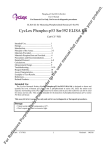
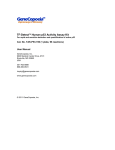
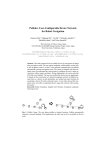
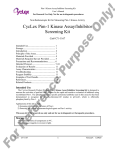
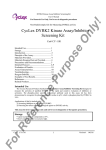
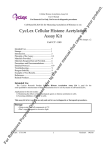
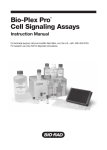


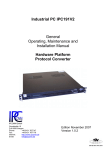
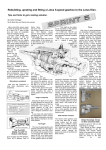
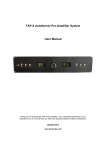
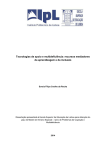
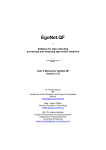

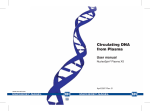

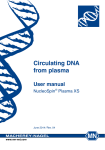
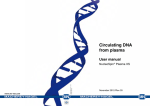
![LS5105 Document No 2 [PDF 1MB] - Australian Electoral Commission](http://vs1.manualzilla.com/store/data/005655823_1-2458abda02bbd8390d0ac9ba8bd86ac6-150x150.png)
